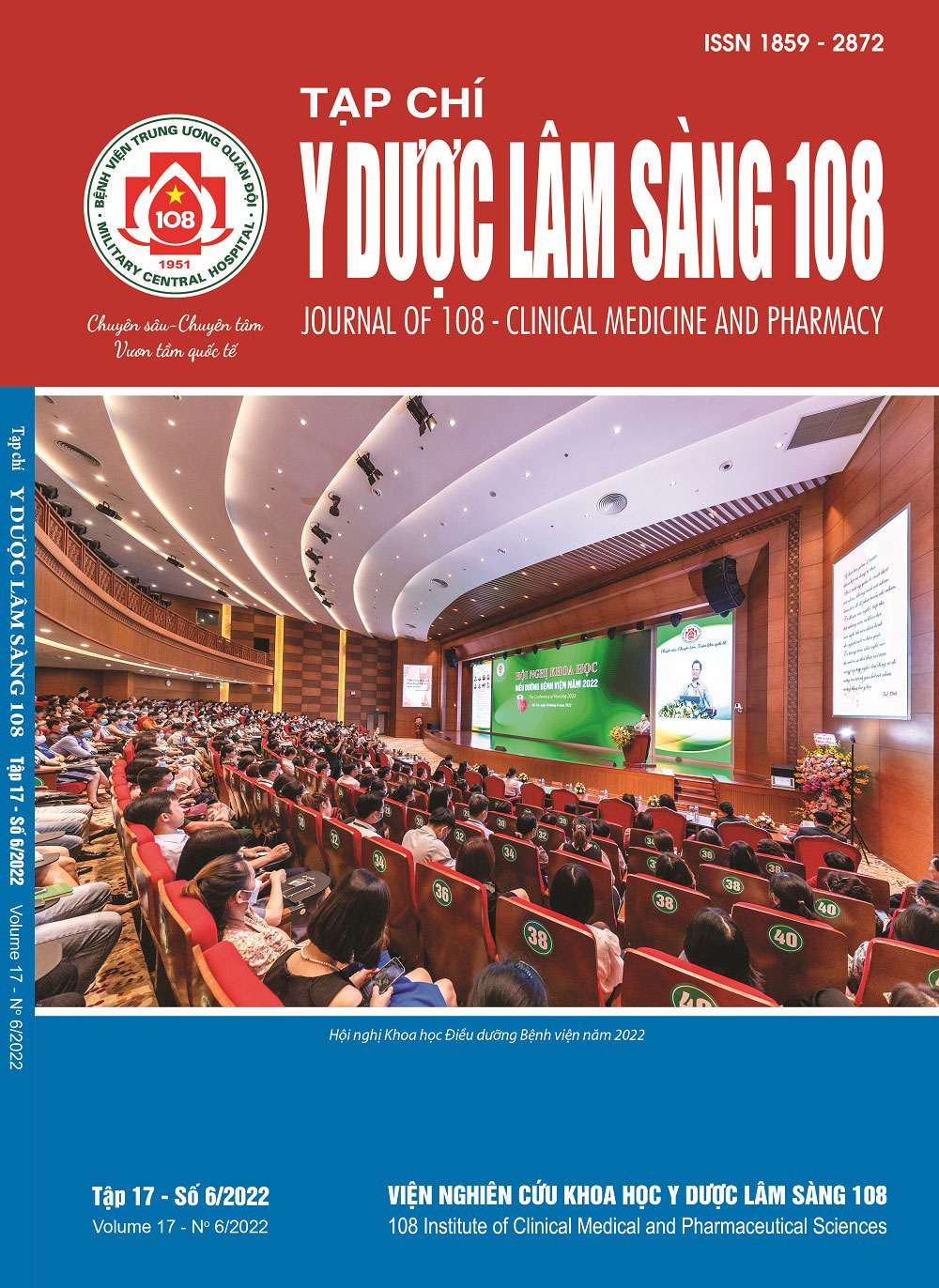Survey practice on the use of nonsteroidial anti-inflammatory drugs in outpatients with osteoarthritis at the 108 Military Central Hospital in 2021
Main Article Content
Keywords
Abstract
Objective: To evaluate the situation of prescribing NSAIDs for outpatients at the Musculoskeletal Clinic-108 Military Central Hospital in 2021. Subject and method: Retrospective, cross-sectional description, information collected from electronic prescriptions of osteopathic outpatients prescribed NSAIDs. Result: 2.102 patients were included in the study, with the following results: The most common musculoskeletal disease at the hospital was osteoarthritis, the average number of drugs in a prescription was 3.2, the average number of NSAIDs per prescription was 1.1, over 95% of prescriptions use 1 NSAID, the most common combinations were 1 oral NSAID and 1 topical NSAID; Non-selective COX inhibitors accounted for the highest rate of use, the adverse reaction encountered in the study was epigastric pain (7.1%); to limit the undesirable effects of NSAIDs, the group of antacids and other anti-ulcer drugs acting on the gastrointestinal tract were prescribed with a high rate (83.3%). The number of days of using NSAIDs was mainly 4-7 days (82.5%). Conclusion: Through the survey on the prescription of NSAIDs at the Musculoskeletal Clinic-108 Military Central Hospital: Most of the patients treated for osteoarthritis were aged 40 and over, degenerative joint disease was a disease with a high rate. The average number of NSAIDs was 1.1 drugs/prescription, there are 8 groups used in combination with NSAIDs. The number of days of using NSAIDs was mainly 4-7 days. The most common adverse reaction encountered in the study was epigastric pain.
Article Details
References
2. Nông Thị Len (2013) Khảo sát tình hình sử dụng thuốc giảm đau chống viêm không steroid tại Bệnh viện Điều dưỡng và Phục hồi chức năng Thái Nguyên. Luận văn Dược sĩ chuyên khoa cấp I, Trường Đại học Dược Hà Nội.
3. Quách Văn Bình (2018) Khảo sát tình hình sử dụng thuốc kháng viêm không steroid (NSAIDs) và các thuốc hỗ trợ trên BN có các yếu tố nguy cơ tiêu hóa và tim mạch tại Khoa Khám bệnh-Trung tâm Y tế huyện Châu Phú. Sở Y tế An Giang, An Giang.
4. Bộ Y tế (2016) Hướng dẫn sử dụng thuốc chống viêm không steroid” và “Hướng dẫn sử dụng thuốc giảm đau, Hướng dẫn chẩn đoán và điều trị các bệnh cơ xương khớp. Nhà xuất bản Y học, Hà Nội, tr. 197-204.
5. Bộ Y tế (2016) Quyết định số 361/QĐ-BYT Ngày 25 tháng 01 năm 2014 của Bộ trưởng Bộ Y tế, “Hướng dẫn chẩn đoán và điều trị các bệnh cơ xương khớp”.
6. Cục Quản lý Dược-Bộ Y tế (2017), Công văn số 5749/QLD-ĐK về Cập nhật hướng dẫn sử dụng thuốc chống viêm không steroid (NSAIDs) và không phải aspirin.
7. Tôn Đức Quý (2013) Khảo sát tình hình sử dụng thuốc kháng viêm giảm đau không steroid trong điều trị tại Bệnh viện Đa khoa tình Hà Tĩnh. Luận văn Dược sĩ chuyên khoa cấp I, Trường Đại học Dược Hà Nội.
8. Newman O, Christian A, David DO, Aaron OA (2017) Mechanism of action of nonsteroidal
anti-inflammatory drugs. Nonsteroidal anti-inflammatory drugs.
9. WHO (1999), Indicators for monitoring national drug policies: A pratical manual, second edition: 162-163.
 ISSN: 1859 - 2872
ISSN: 1859 - 2872
